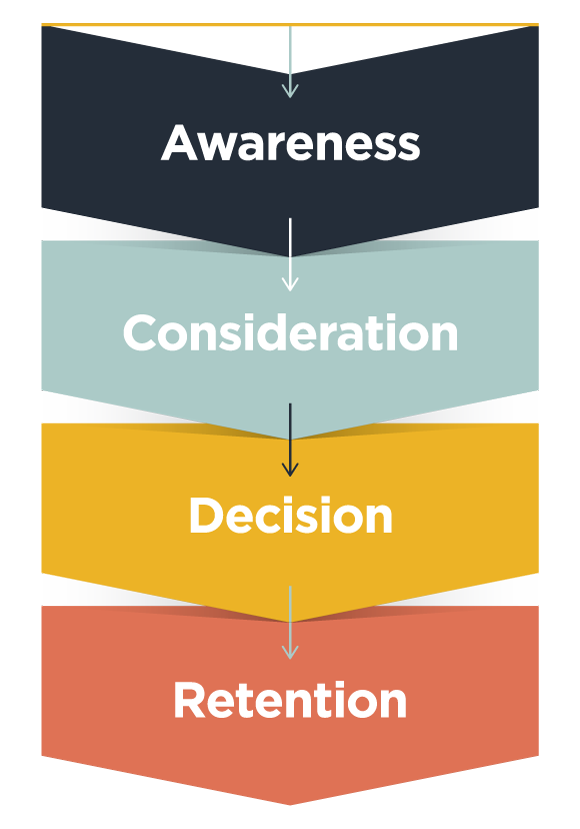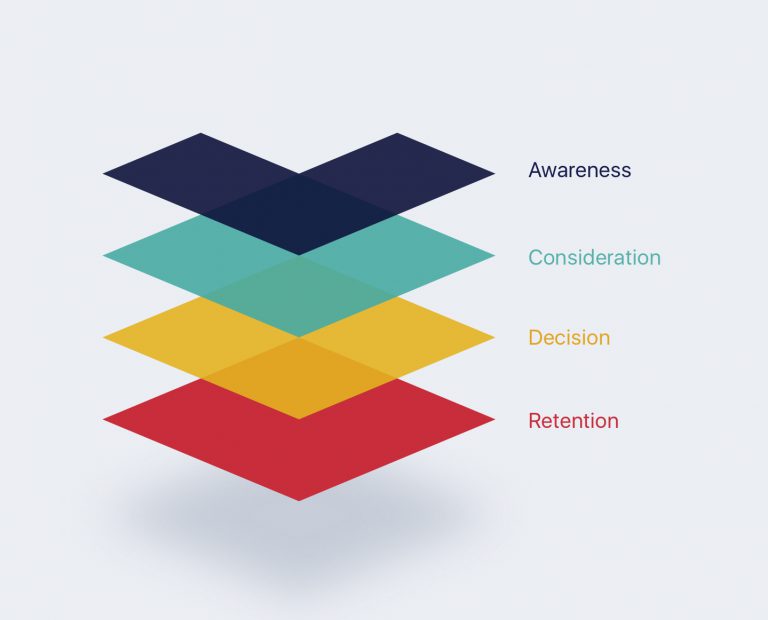When you build a website, you typically don’t just code up the homepage and call it quits. More likely, you’re building out additional pages that give extra detail about you, your products or services, your customers, and your industry. We think the same should be true with video.
Plenty of companies out there slap a video on their homepage and call it quits. But a homepage video, explainer video, or whatever you prefer to call it, is just the tip of the proverbial iceberg. Video for business, like a website, can be used to establish and humanize your brand, educate customers, teach and train, introduce your happy customers, and so much more. Like any marketing effort, there should be a long-term strategy, a video roadmap per se, to ensure you’re making the most of your video marketing efforts.
On a semi-related side note, I think doing video content well and on a consistent basis is low hanging fruit for many companies. There are so few companies doing video really well and with any kind of regularity, that by doing it even halfway decently, with a long-term plan in place, it can quickly set you apart from your competition. Just look at Squarespace compared to everyone else in the market and you’ll see what I mean. I digress.

The good folks at Wistia came up with a helpful framework for thinking about your customer’s 3-step purchasing journey (awareness, consideration, decision) and how it should apply to the way you plan out, and prioritize, your video content needs. We took it one step further as a reminder to connect with customer’s after their journey is “complete.” Above is how the funnel might look. But let’s take a more in-depth look at each step of this buying process.
Top of the Funnel
At the top of the funnel (awareness), you have customers who are aware of the problem, or know they have a need, but not yet ready to make a purchase. At this stage in the game, you’re not trying to sell your product or explain how it works. Your job is to educate and entertain. Video content at top of the funnel may include:
Educational Content
We frequently produce videos for our blog covering content we think our potential future customers might be interested in, like How to Convince Your CEO You Need Video or How to Grab Viewers’ Attention in 10 Seconds.
It doesn’t just have to be on your blog and social media either. We worked with BlueCross BlueShield and their eCards for Health campaign to create video content that simply educates viewers on various health topics, like the benefits of hugs, how to pack a healthy lunch, or how to identify the signs of a stroke. These videos are meant to be helpful and easily shareable with friends and family. We’ve also done video content for Lowe’s that helps educate potential customers on how to select lighting for their home, or how to decide on a new refrigerator.
Branded Content
In the spirit of content marketing, branded content is all about entertainment. The intent is not to make a sale. In fact, some branded content barely even mentions the brand behind it. Another way to think about it is why vs. what. “Why” videos focus on emotion and the intended benefit of a product or service, whereas “what” videos are more practical and talk about what the product is and how it works. And since emotion is an important part of the buying process, “why” oriented videos are a great tool at your disposal.
Just look at what Red Bull is doing. Remember that guy jumping out of a space balloon from 128,000 feet? Sure it has nothing to do with energy drinks, but it reinforces their brand (i.e. extreme sports, you can do anything) and has nearly 40 million views. Do you think a run of the mill, sales-oriented commercial about Red Bull would get the same result? Me thinks not.
Middle of the Funnel
At this point in the buying cycle (consideration), your potential customers are beginning to consider their options. They know they have an unmet need, and are looking around at various potential solutions. Ideally the useful, entertaining content you produced at the top of the funnel has left you top of mind now that they’re getting more serious about making a purchase. Now it’s time to dive a little deeper into the what and how.
Explainer Videos
The most common type of video you’ll find at this stage in the purchase process is the explainer (or homepage video, or overview video, etc.). An explainer video is used to explain your company, product, or service in 2 minutes or less. They can be live action or animation, but they often follow a standard formula: problem, solution, how it works, call-to-action.
Explainers are great because they boil what can be a complex discussion down to a 60-120 second elevator pitch. You’ll often find them on a homepage or product page, and they’re frequently the sales departments best friend.
This explainer video we produced for Crazy Egg resulted in a 64% boost in conversion rates, which is exactly what a video at this stage should do – drive more potential customers towards a decision and purchase.
Company Story Videos
A company story video mentions your product or service, but is more focused on who you are as a company and why you exist – your mission. They’re almost exclusively live action and consist of interviews of key employees and stakeholders within your organization. The goal is to bring your company to life, show the people behind the brand, and help potential customers connect with your purpose and mission. Here’s a company story video we shot a while back for a Chicago-based web app developer 8th Light.
At the bottom of the funnel (decision), your potential customers are finally ready to make a decision. They’re aware of their need, they’ve researched the potential solutions, and it’s time to make a choice. This is where your video content can become even more granular and specific, focusing on why your product or service is the right choice. Some of your content options in this final stage include:
Customer Story or Case Study Videos
When a potential customer is ready to make a decision, they’re often looking for some social proof or validation to ease any worries about making the wrong choice. This is where customer story or case study videos can be extremely useful.
Like how it sounds, a customer story video tells the story of your customer (or ideally several) and how they’re using your product or service to meet a need. Unlike a written testimonial, a video allows prospects to see how your existing customers are using and benefiting from your products and services. Seeing is believing.
Squarespace, Dropbox, and Pardot are all doing customer story videos really well, and to great success. And here’s a video from a customer story series we developed for Google:
Demo or Tutorial Videos
A demo video is a demonstration of how your product or service works. For an application, this is typically a screencast that walks viewers through available features and shows how they work. For many companies, app demo videos can replace the need for continuous one-on-one GoToMeetings that waste time and resources. Demo videos can also show off physical products, and are frequently shot using live action video.
Here’s an app demo video that we produced for Glint:
And here’s one of a series of tutorial videos we created for Netflix:
You can also use demo or tutorial videos in the FAQ section of your website. Like the educational video blog content at the top of the funnel, FAQ videos answer the top questions your potential customers are asking about your products or services. Here’s one we did for our most frequently asked question, “how much does an explainer video cost?”
Beyond the Funnel
Your video content strategy shouldn’t stop where the funnel ends. Once that prospect becomes a customer, there are plenty of creative ways to educate and delight them using video. MailChimp uses video to help users learn about new features and how to use them. We use video to introduce our Producers to new clients, help them fill out our creative brief, and keep them updated on what we’ve been up to once or twice a year.
And it’s not always just about the customer, ThoughtWorks used video to recruit better candidates, and plenty of businesses use video internally to keep their teams aligned and up to date. The possibilities are endless and go only as far as your creativity will take you. So may your funnel be full, good luck, and Godspeed.
